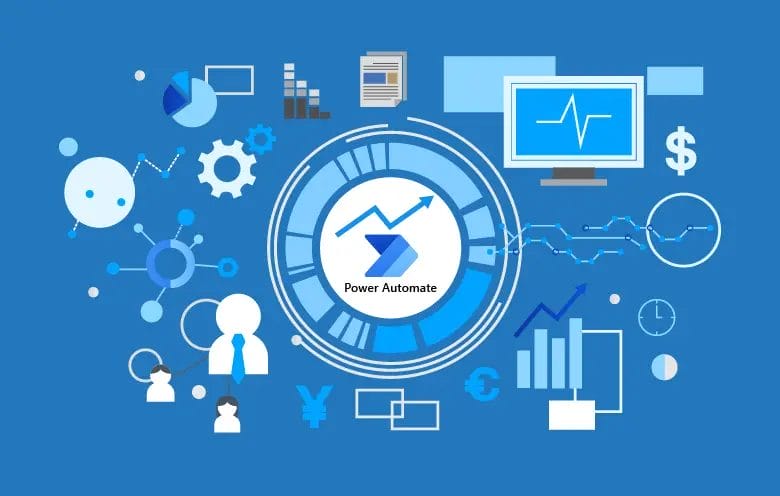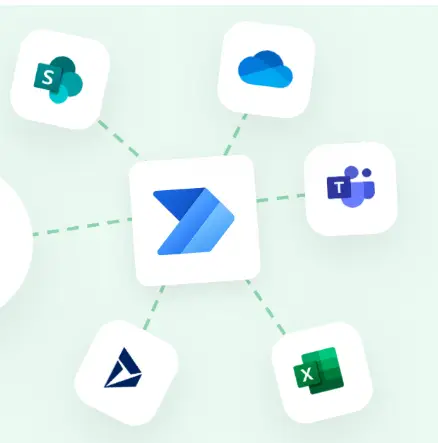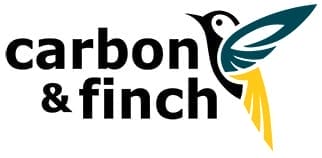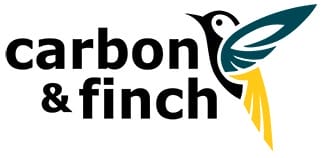Best Practices for Consultants In Microsoft Power Automate

Best Practices for Consultants In Microsoft Power Automate
Microsoft Power Automate is a powerful tool that allows consultants to streamline and automate their business processes. With its intuitive interface and extensive functionality, Power Automate has become a go-to solution for consultants looking to save time, increase productivity, and improve efficiency. In this article, we will explore the best practices for consultants to master Microsoft Power Automate and leverage its capabilities to their fullest potential.
Benefits of using Microsoft Power Automate for consultants
As a consultant, utilising Microsoft Power Automate offers numerous benefits that can greatly enhance your daily operations. Firstly, Power Automate allows you to automate repetitive tasks, freeing up valuable time that can be better spent on strategic initiatives and client engagement. By automating workflows, you can streamline your processes, reduce errors, and increase overall productivity.
Secondly, Power Automate seamlessly integrates with other Microsoft tools, such as Microsoft Dynamics 365 and Microsoft Office 365. This integration enables consultants to create end-to-end solutions that leverage the power of multiple Microsoft technologies. By leveraging these integrations, consultants can provide comprehensive and efficient solutions to their clients, enhancing customer satisfaction and building long-term relationships.
Best practices for setting up Microsoft Power Automate
To effectively set up Microsoft Power Automate, consultants should follow a few best practices. Firstly, it is crucial to clearly define the objectives and goals of the automation project. By understanding the desired outcomes, consultants can design workflows that align with the business requirements and deliver tangible results. This clarity of purpose ensures that the automation efforts are focused and effective.
Secondly, consultants should carefully analyse the existing processes and identify areas that can benefit from automation. By conducting a thorough assessment, consultants can pinpoint repetitive tasks, bottlenecks, and areas of inefficiency. This analysis provides valuable insights for designing optimised workflows that address the pain points and deliver maximum value.
Lastly, consultants should prioritise security and data privacy when setting up Power Automate. It is essential to ensure that sensitive information is protected and that the workflows comply with data protection regulations. By adhering to best practices in data security, consultants can build trust with their clients and ensure the integrity of their automation initiatives.
Automating repetitive tasks with Microsoft Power Automate
One of the key advantages of Microsoft Power Automate is its ability to automate repetitive tasks. By automating these mundane and time-consuming activities, consultants can focus on higher-value work and improve their overall productivity. Here are some best practices for automating repetitive tasks with Power Automate.
Firstly, consultants should start by identifying the tasks that are most suitable for automation. These tasks are typically repetitive, rule-based, and require minimal human intervention. By automating these tasks, consultants can reduce errors and accelerate the completion time, resulting in increased efficiency.
Secondly, consultants should leverage the extensive library of pre-built templates and connectors available in Power Automate. These templates and connectors provide ready-made solutions for common automation scenarios, saving consultants valuable time and effort. By utilising these resources, consultants can quickly set up automated workflows without the need for extensive coding or development.
Lastly, consultants should regularly monitor and analyse the performance of their automated workflows. By tracking key metrics and analysing the data, consultants can identify areas for improvement and optimise their automation initiatives. This continuous improvement cycle ensures that the automated tasks are running smoothly and delivering the desired outcomes.
Integrating Microsoft Power Automate with other Microsoft tools

Microsoft Power Automate seamlessly integrates with other Microsoft tools, allowing consultants to create comprehensive solutions that leverage the capabilities of multiple technologies. Here are some best practices for integrating Power Automate with other Microsoft tools.
Firstly, consultants should leverage the integration between Power Automate and Microsoft Dynamics 365. This integration enables consultants to automate workflows, such as lead nurturing, opportunity management, and customer onboarding. By integrating Power Automate with Dynamics 365, consultants can streamline their sales and service processes, improve customer engagement, and drive business growth.
Secondly, consultants should explore the integration possibilities with Microsoft Office 365. By connecting Power Automate with Office 365 applications such as Outlook, Excel, and SharePoint, consultants can automate tasks such as email notifications, data synchronisation, and document management. This integration enhances collaboration, improves data accuracy, and increases overall efficiency.
Lastly, consultants should consider integrating Power Automate with Microsoft Power BI for advanced reporting and analytics. By connecting Power Automate with Power BI, consultants can gain valuable insights into their automated workflows and track key performance indicators. This integration enables consultants to make data-driven decisions, identify areas for improvement, and optimise their automation initiatives.
Customising workflows with Microsoft Power Automate
Microsoft Power Automate provides consultants with the flexibility to customise workflows according to their specific business requirements. Here are some best practices for customising workflows with Power Automate.
Firstly, consultants should leverage the wide range of available actions and triggers in Power Automate. These actions and triggers allow consultants to define the logic and conditions for their workflows, ensuring that the automation accurately reflects the desired business processes. By utilising these building blocks, consultants can create customised workflows that align with their unique requirements.
Secondly, consultants should explore the capabilities of Power Automate’s advanced features, such as approval processes, parallel branches, and error handling. These features enable consultants to design complex workflows that can handle various scenarios and exceptions. By utilising these advanced features, consultants can create robust and resilient automation solutions.
Lastly, consultants should regularly test and validate their customised workflows. By conducting thorough testing, consultants can identify any potential issues or errors and make necessary adjustments. This testing phase ensures that the workflows are functioning as intended and delivers the desired outcomes.
Troubleshooting common issues in Microsoft Power Automate
While Microsoft Power Automate is a powerful tool, consultants may encounter common issues during the setup and execution of workflows. Here are some best practices for troubleshooting common issues in Power Automate.
Firstly, consultants should closely examine the error messages and logs provided by Power Automate. These error messages often provide valuable insights into the root cause of the issue and can guide consultants towards a solution. By carefully analysing the error messages, consultants can quickly identify and resolve the problem.
Secondly, consultants should ensure that all necessary permissions and access rights are granted to the relevant users. Power Automate relies on proper user permissions to access data and perform actions. By verifying the permissions, consultants can eliminate any potential authorisation issues and ensure smooth workflow execution.
Lastly, consultants should actively engage with the Power Automate community and seek assistance from fellow users and experts. The Power Automate community is a valuable resource for troubleshooting, as it provides a platform for sharing knowledge, best practices, and solutions to common issues. By leveraging the collective expertise of the community, consultants can quickly resolve any challenges they may encounter.
Advanced features and capabilities of Microsoft Power Automate
Microsoft Power Automate offers a wide range of advanced features and capabilities that can further enhance the automation efforts of consultants. Here are some key advanced features of Power Automate.
Firstly, consultants can leverage the AI Builder in Power Automate to add artificial intelligence capabilities to their workflows. AI Builder enables consultants to incorporate machine learning models, optical character recognition (OCR), and sentiment analysis into their automation solutions. By utilising AI Builder, consultants can automate complex tasks that require intelligent decision-making.
Secondly, consultants can take advantage of the built-in connectors for popular cloud services and applications. Power Automate provides connectors for services such as Salesforce, SharePoint, and Twitter, allowing consultants to integrate these platforms into their workflows seamlessly. This integration enables consultants to create end-to-end solutions that span multiple systems and platforms.
Lastly, consultants can explore the capabilities of Power Automate Desktop, a desktop-based version of Power Automate. Power Automate Desktop enables consultants to automate tasks on their local machines, such as data extraction, report generation, and data entry. By utilising Power Automate Desktop, consultants can automate their day-to-day activities, further enhancing their productivity.
Training and resources for mastering Microsoft Power Automate

To fully master Microsoft Power Automate, consultants should take advantage of the available training and resources. Here are some recommended resources for learning and enhancing Power Automate skills.
Firstly, consultants can explore the Microsoft Power Automate documentation and tutorials available on the official Microsoft website. These resources provide comprehensive guidance on various aspects of Power Automate, from basic concepts to advanced techniques. By following the tutorials and examples, consultants can quickly grasp the fundamentals and progressively enhance their skills.
Secondly, consultants should consider attending training courses and workshops offered by Microsoft and its certified partners. These training programs provide in-depth knowledge, hands-on experience, and practical insights into Power Automate. By participating in these training programs, consultants can gain a deep understanding of Power Automate and its capabilities.
Lastly, consultants should actively engage with the Power Automate community, including online forums, user groups, and social media platforms. The community is a valuable source of knowledge and support, offering opportunities for networking, sharing best practices, and seeking guidance from experienced professionals. By actively participating in the community, consultants can expand their knowledge and stay updated with the latest developments in Power Automate.
Final thoughts on using Microsoft Power Automate as a consultant
Microsoft Power Automate is a powerful tool that offers significant benefits for consultants. By following the best practices outlined in this article, consultants can harness the full potential of Power Automate and enhance their productivity, efficiency, and customer satisfaction.
From automating repetitive tasks to integrating with other Microsoft tools, consultants can streamline their workflows and deliver comprehensive solutions to their clients. By customising workflows and troubleshooting common issues, consultants can optimise their automation initiatives and ensure smooth operation.
By exploring the advanced features and capabilities of Power Automate and leveraging the available training and resources, consultants can master this tool and stay ahead in the ever-evolving business landscape.
In conclusion, Microsoft Power Automate is a game-changer for consultants, providing them with the tools they need to excel in their roles. Embrace the power of automation and elevate your consultancy services with Microsoft Power Automate.
If you are looking for a Microsoft Dynamics 365 technology consultancy that combines expertise with the power of Microsoft technologies, look no further than Carbon and Finch. We deliver high-quality Microsoft solutions for enterprises worldwide. Contact us today to discuss how we can help you leverage Microsoft Power Automate and other Microsoft technologies to transform your business.




